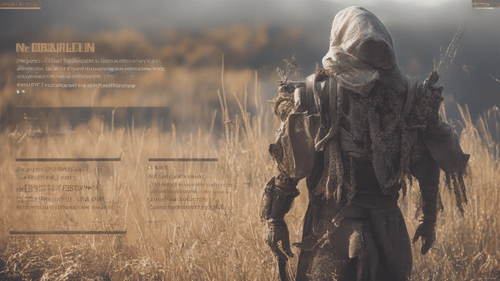
Discover the Transformative Potential of AI Image Text Technology
In today's rapidly evolving technological landscape, AI (Artificial Intelligence) continues to drive innovation across various domains. One such remarkable advancement is the emergence of AI image text technology, revolutionizing how we interact with visual content and bridging the gap between images and text. This article delves into the multifaceted realm of AI image text, exploring its applications, benefits, and impact on diverse industries.
AI Image Text: Bridging Visual and Linguistic Worlds
AI Image Text technology, a fascinating fusion of computer vision and natural language processing, enables computers to decipher and generate textual content from images. This revolutionary breakthrough unlocks the potential for seamless communication between the visual and linguistic worlds, creating opportunities for enhanced accessibility, comprehension, and engagement.
Applications of AI Image Text
The applications of AI image text are as diverse as they are transformative, permeating various industries and domains. From content creation to accessibility solutions, here are some notable applications:
Content Creation and Enhancement
AI image text is empowering content creators to streamline their workflow and enhance the impact of visual content. By automatically generating descriptive and context-rich captions, AI image text tools assist in producing compelling narratives that resonate with audiences.
Accessibility and Inclusivity
In the realm of accessibility, AI image text serves as a beacon of inclusivity. By converting images into text, individuals with visual impairments can access and comprehend visual content, fostering a more inclusive digital environment.
E-Commerce and Visual Search
E-commerce platforms leverage AI image text for visual search functionality, allowing users to search for products using images rather than keywords. This innovation enhances user experience and facilitates more accurate product discovery.
Healthcare Diagnostics
In healthcare, AI image text aids in diagnostics by converting medical images into descriptive text. This assists medical professionals in interpreting and communicating intricate visual data more effectively.
Automotive and Autonomous Vehicles
AI image text contributes to the development of autonomous vehicles by enabling real-time interpretation of road conditions, traffic signs, and obstacles from images captured by vehicle cameras.
Benefits of AI Image Text
The integration of AI image text technology offers a plethora of benefits that extend beyond its immediate applications. Some key advantages include:
Enhanced Content Accessibility
AI image text technology bridges the accessibility gap, making visual content available to individuals with visual impairments. This fosters a more inclusive digital ecosystem and ensures equal access to information.
Efficient Data Indexing and Retrieval
By converting visual data into text, AI image text streamlines data indexing and retrieval processes. This enhances search capabilities and accelerates information retrieval from vast image repositories.
Improved User Experience
Incorporating AI image text into user interfaces enhances user experience by providing context and relevant information alongside images. This enriched experience translates to higher engagement and satisfaction.
Time and Resource Savings
Automated generation of image captions and descriptions through AI image text technology reduces the time and resources required for manual content creation, boosting productivity and efficiency.
AI Image Text in Education: A Transformative Tool
AI image text technology holds immense potential in the field of education, revolutionizing the way students interact with learning materials. By converting educational visuals into textual formats, this technology facilitates comprehension, note-taking, and knowledge retention.
AI Image Text: The Future of Communication
As AI image text technology continues to evolve, its impact on communication is undeniable. The seamless integration of images and text not only enhances accessibility but also fosters creative expression and cross-cultural communication.
FAQs about AI Image Text
How does AI Image Text Work?
AI image text technology utilizes advanced algorithms to analyze visual content, extract relevant features, and generate coherent textual descriptions. This process involves complex computations and neural networks.
Is AI Image Text Accurate?
Yes, AI image text technology has witnessed significant advancements in accuracy. However, its precision may vary depending on factors such as image complexity and the quality of the training data.
What Industries Can Benefit from AI Image Text?
AI image text has applications across various industries, including content creation, e-commerce, healthcare, automotive, and education, among others.
Can AI Image Text Replace Human Creativity?
While AI image text aids in content generation, human creativity remains irreplaceable. AI serves as a powerful tool that complements and enhances human creative processes.
How Does AI Image Text Impact SEO?
AI image text can improve SEO by providing descriptive textual information about images, making them more discoverable in search engine results and enhancing overall website accessibility.
What Are the Ethical Considerations of AI Image Text?
Ethical considerations of AI image text include issues related to data privacy, bias in training data, and potential job displacement. Striking a balance between technological advancements and ethical responsibilities is crucial.
Conclusion
In a world where visuals and text coexist as powerful means of communication, AI image text technology emerges as a unifying force. Its transformative applications, diverse benefits, and profound impact on industries underscore its significance in shaping the future of communication and accessibility. As we embrace this innovation, it is imperative to navigate the evolving landscape with ethical mindfulness, ensuring that AI image text continues to bridge gaps and empower diverse audiences, making the realm of visual content more inclusive and dynamic than ever before.